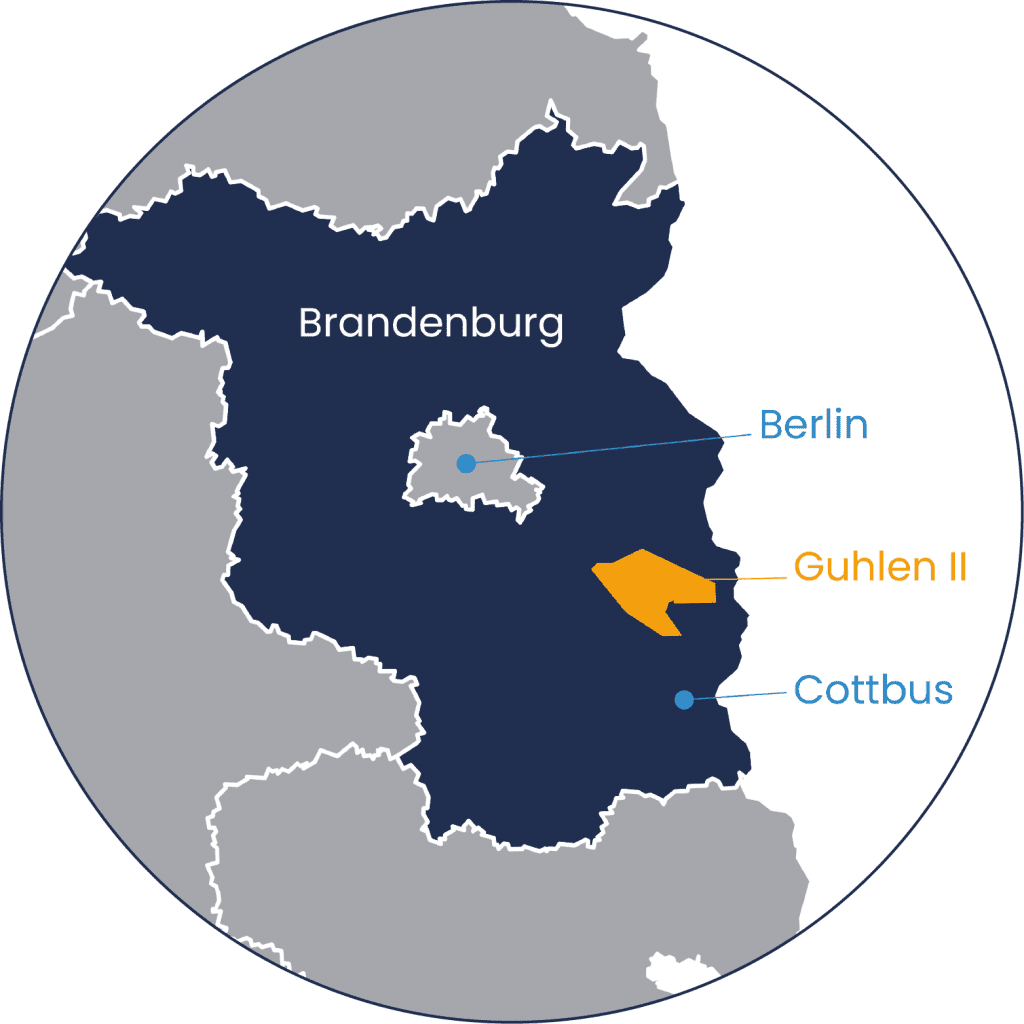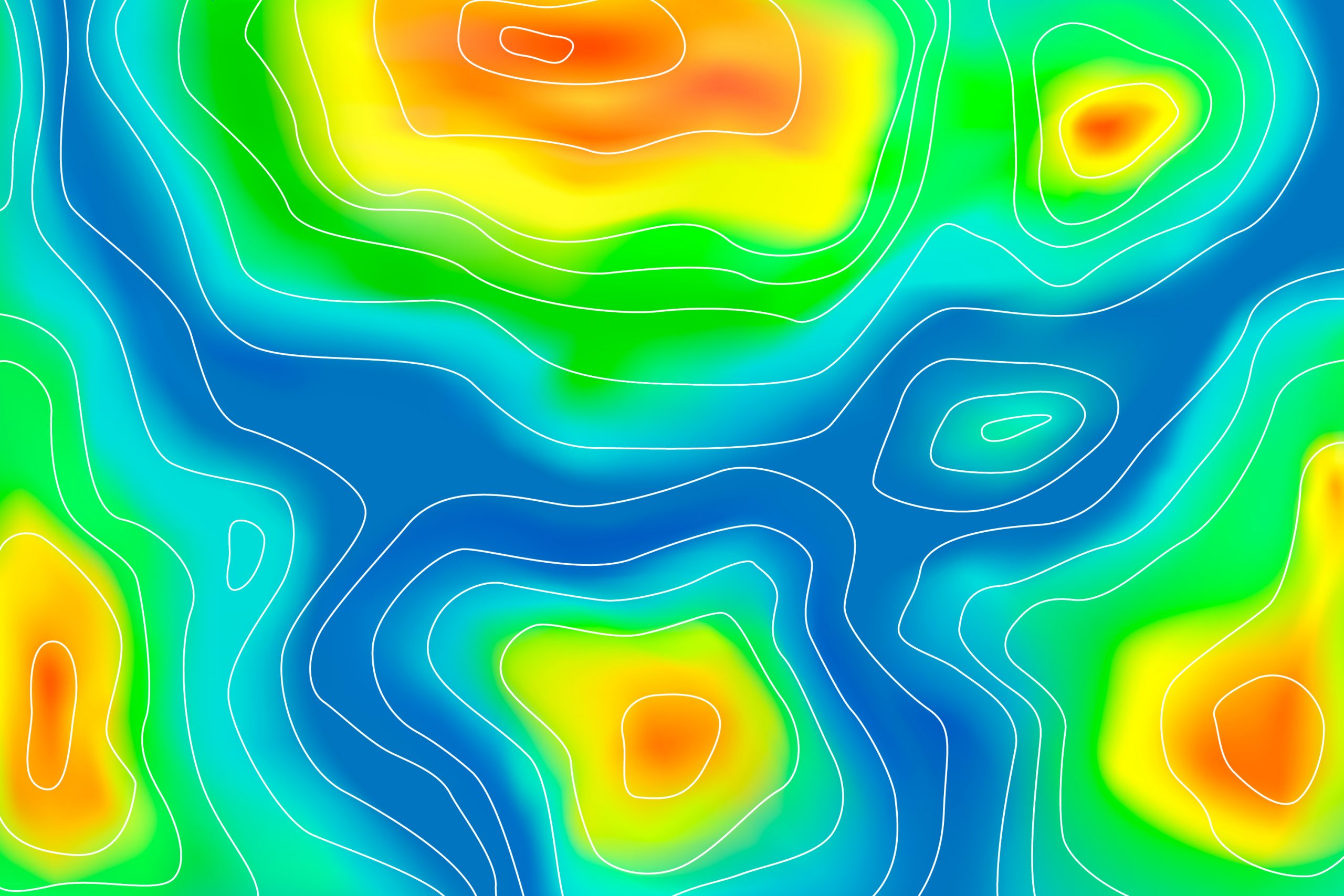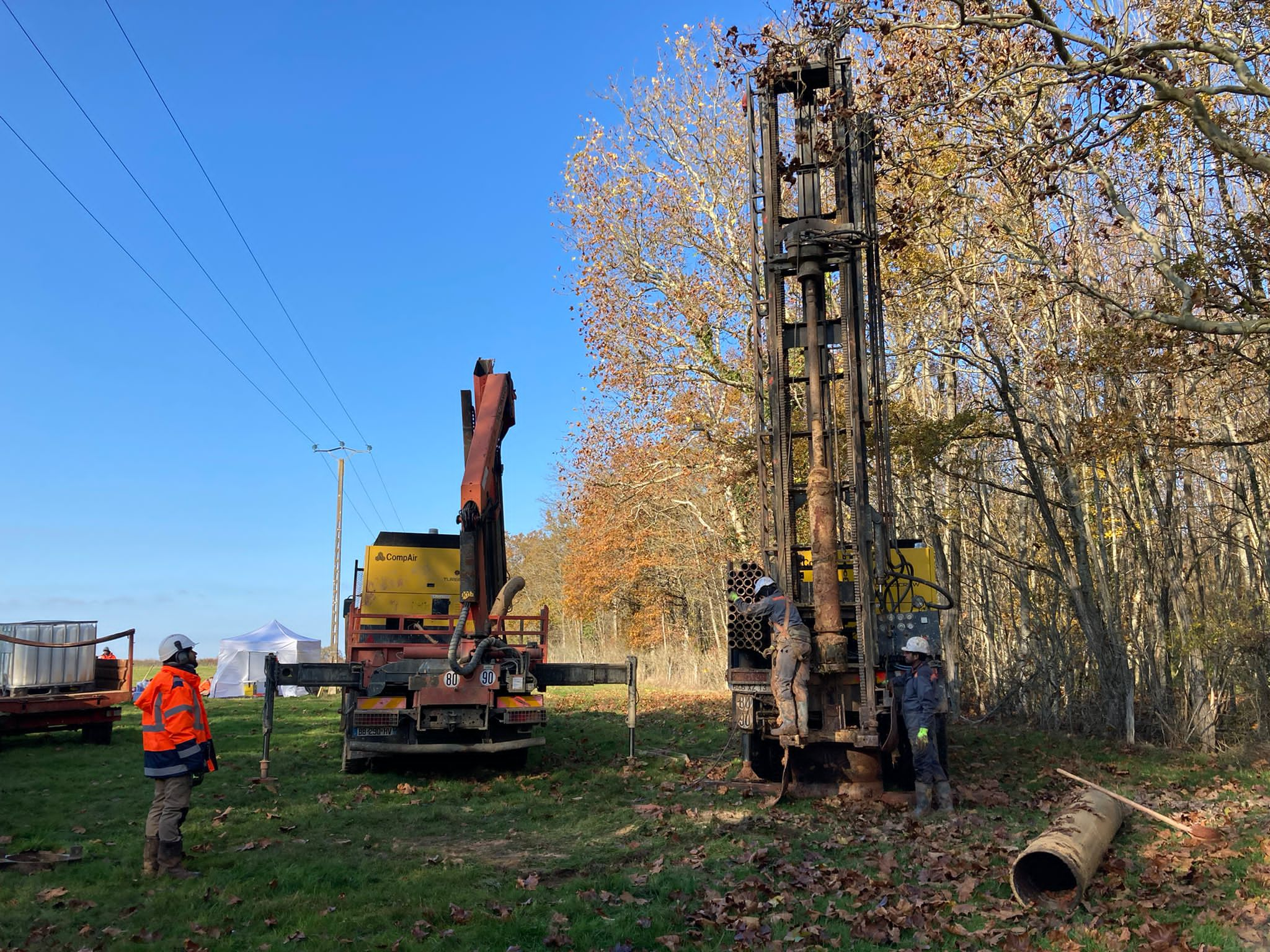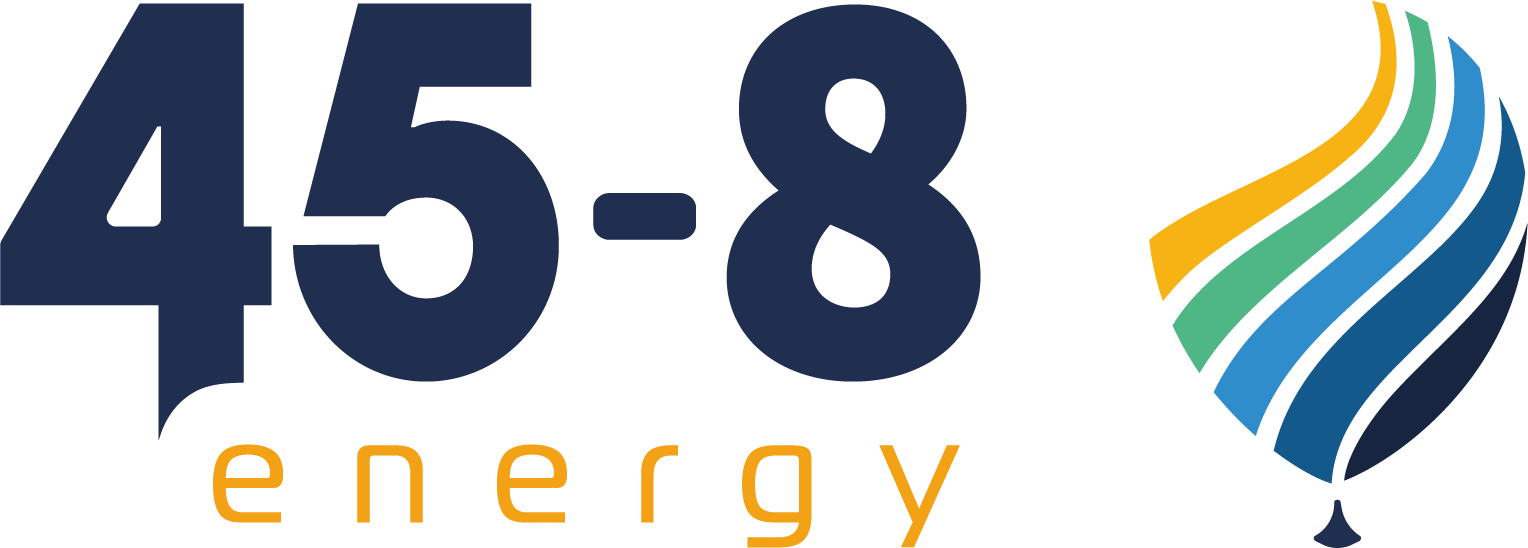Guhlen II project
Helium “Made in Brandenburg“!
Bibliographical research and field measurements have been carried out in the past, demonstrating significant helium potential in the area known as “Guhlen II”.
In June 2023, 45-8 ENERGY applied for an exploration license from the regional mining authority, the LBGR, which is currently being processed. It concerns an area of 641km² in the Land of Brandenburg, south-east of Berlin, in Germany. The aim of the application is to deepen our geological knowledge of the area and confirm its helium potential.
The license application has been submitted for a period of 5 years in order to acquire the data required to confirm the accumulation of a helium-rich gas mix.
The Guhlen II project is a supply opportunity for eastern Germany. At a time when 100% of the helium consumed in Germany is imported from outside Western Europe, from the United States, Qatar, Algeria or Russia, at great energy cost and with a high carbon impact, it is becoming essential to produce as close as possible to where it is consumed. As part of the quest for territorial sovereignty, the Guhlen II project makes it possible to consider local helium production, which is necessary for the surrounding industries that have high demand.
Beyond the Guhlen II zone, 45-8 ENERGY is convinced of the potential of this particular geological region, where high levels of helium have been widely reported in the past but never produced to any significant extent due to a lack of use at the time.
01
The Guhlen area

The Guhlen II exploration license covers an area of 641km² in Brandenburg, south-east of Berlin.
The requested perimeter is voluntarily large, in order to gain a comprehensive understanding of the geology of the area, and then to target high-potential zones more precisely as acquisitions are made.
02
The gas discovery
Drilling and testing conducted by the previous operator has demonstrated and delineated a nitrogen-rich gas accumulation associated with helium and a natural gas fraction. 45-8 ENERGY therefore intends to develop an innovative helium and local blue hydrogen production facility.
Its extreme rarity on Earth and its unique properties make it a highly sought-after and vital resource for many industries.
The extraction and purification of helium from the Guhlen II project would represent a major production of helium in Germany, enabling a local supply of a strategic resource that is currently 100% imported from abroad and subject to regular shortages.
> More about helium
Helium
Guhlen II gas is composed mainly of nitrogen, the most abundant element in the Earth's atmosphere (about 78% of its composition).
Because of the abundance of nitrogen in the air, its attractiveness is limited and its economic use unlikely. Its release into the atmosphere does not represent any risk for people (inert, odorless, invisible) or the environment (does not contribute to the greenhouse effect and is already present in high concentrations in the Earth's atmosphere).
Nitrogen
The limited fraction of natural gas in the Guhlen II field is seen as an innovation opportunity for 45-8 ENERGY. We plan to produce hydrogen on site using a steam methane reforming process.
The carbon dioxide generated by this process will be captured and purified to supply local industries (breweries, cryogenics, firefighting), another tight markets that currently imports the resource over long distances.
This approach is a real answer to the challenges of hydrogen supply in Europe, contributing to the energy and ecological transition.
Methane
03
The work program
The work planned by 45-8 ENERGY has two objectives.
Confirm the helium production potential of the existing discovery and to implement a first production unit.
Evaluate the exploration potential within the perimeter of the license in order to consider carrying out additional exploration drilling.
The aim is to develop a project that reconciles industrial activities with the protection of the environment and residents. This fact has the highest priority for 45-8 ENERGY in all its actions.

Analysis and reprocessing of existing data
A large amount of geological and geophysical data has been acquired in the Guhlen area. 45-8 ENERGY will integrate these data and reprocess some of them, in particular the 3D seismic reflection data, in order to confirm the geometry and the volumes of the discovery.

Drilling and testing
In order to confirm the extension and characteristics of the fields, drilling to a depth of about 2500 meters is required. The following well test will make assess the flow rate capacity of the wells and to predict the long-term behaviour of the field. These results will be decisive in confirming the technical and economic viability of the project.

Design and implementation of a production unit
If the drilling and well tests results confirm the technical and economic viability of the helium production project and its associated resources, a production unit will be implemented. This unit will be designed to meet the technical constraints of the project and to conciliate industrial activity with respect of the environment and the local residents. This will be achieved by reducing the project's footprint, using innovative technologies to optimize the unit's energy use, recycling the generated heat and reducing its carbon footprint.

Assessment of the exploration potential of the permit
The study of existing seismic data, possibly supplemented by additional acquisitions, will enable us to reveal all the prospective structures which, if confirmed positive after drilling, could constitute a production relay.
04
The key steps
05
A local and strategic project
In addition to Guhlen II, the 45-8 ENERGY project represents a means of securing the local supply of helium for an entire region of Germany, which is currently in high demand and subject to recurring risks of shortages.
The Guhlen II production project is part of the company’s drive to value the most of all the resources present in the subsurface. 45-8 ENERGY has already established a commercial plan to secure outlets for each resource, namely helium, hydrogen and carbon dioxide.
Germany uses 9.5 millions m³ of helium each year, making it the world's 5th largest consumer, and is also largely dependent on imports. Silicon Saxony, which covers Dresden and the surrounding area, is the largest microelectronics site in Europe and the 5th largest in the world.
This type of industry requires large volumes of helium to operate. Electronics accounts for 25% of the world's use of helium. Since the Guhlen project is located 100km from Dresden and, more specifically from the Silicon Saxony, the helium produced will be distributed directly to microelectronics companies in this major competitive cluster. In addition, INTEL is planning to build two semiconductor production facilities in Magdeburg, located 230km away from the project, by the end of the decade.
Part of our helium production could thus be dedicated to supplying these units, which consume large amount of helium and are essential to meet the needs of the New Tech.
The eastern part of Germany is an important industrial region with many major consumers of hydrogen (green mobility, steel industry, chemical industry).
As part of the energy and ecological transition, projects using hydrogen are multiplying and the consumption of this resource should double by 2030, from 55 TWh (in 2020) to 110 TWh (in 2023). The hydrogen produced from the methane fraction of the Guhlen project will therefore contribute to the decarbonation of local industries, in search of a secure and more eco-responsible supply.
For example, part of the hydrogen from the Guhlen project could be sent to the ArcelorMittal steel plant, located 50km away, which is planning to produce eco-responsible steel, powered by hydrogen.
Germany is both the largest producer and the largest consumer of industrial carbon dioxide in Western Europe.
However, the production of the resource is mostly concentrated in the West of Germany. And carbon dioxide from the eastern part of Germany is mainly generated by the seasonal production of ammonia.
Carbon dioxide produced on the Guhlen project will thus ensure a local, reliable and secure supply to numerous consumer companies in the region. These companies are very diversified and involve the carbonated beverage indutry (beer, soft drinks, water...), the chemical industry and the cryogenic industry.
